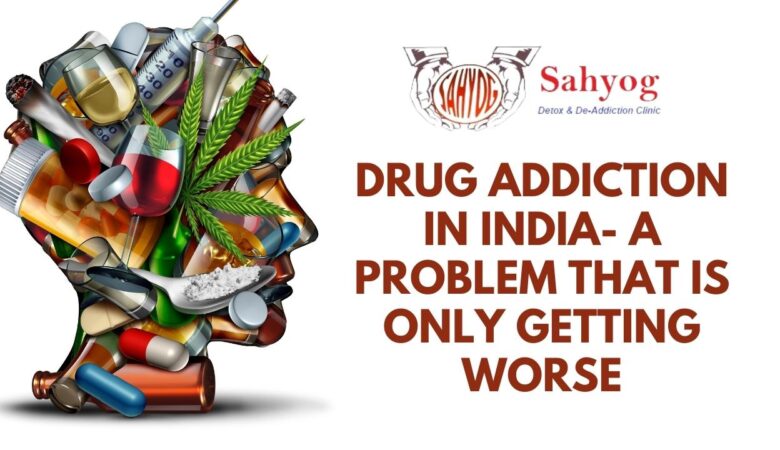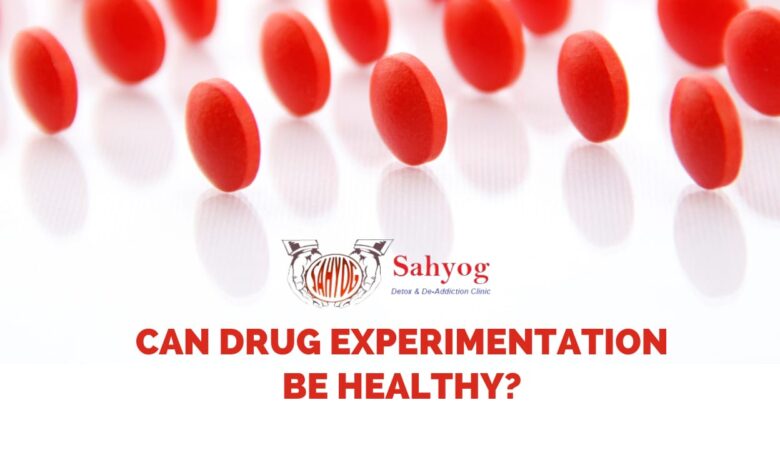Drug addiction in India- a problem that is only getting worse
In today’s world, it has become common to see the presence of some form of drug use in the lives of those who are suffering from depression or other mental health issues. Unfortunately, what people do not realize about drug addiction in India is that it can occur to anyone regardless of their social class, gender or age group and could even have an adverse effect on their work and family life as well as their mental health. This article provides information on just how widespread drug addiction in India actually is, why so many people turn to drugs, and the physical and psychological effects they can cause if this problem goes untreated. Drug addiction has always been an issue in India, but recent government research suggests that it’s affecting more people than ever before. The study, which was conducted by the National Drug Dependence Treatment Centre, estimates that about 2 million people are dependent on drugs in India, and that there’s an average of 40-50 new cases every day. In the report’s conclusion, the researchers suggest that the increase in drug use may be attributed to several factors, including poverty and social marginalization, but they ultimately call on the Indian government to strengthen its efforts to prevent addiction and treat those who are already addicted. The History of Drug Abuse in India India has historically struggled with drug addiction problems, but what’s behind India’s increase in drug use? It’s a combination of socio-economic factors, higher disposable income among urban populations, and extensive coverage by local media. It’s also not an issue restricted to cities like Mumbai or New Delhi; rural areas are dealing with these issues as well. In both metros and smaller towns, drug abuse is disproportionately prevalent among young people. One reason for that may be unemployment—particularly because treatment centers aren’t widely available throughout India. Moreover, there isn’t much education about drugs in schools (although many schools do have anti-drug programs). There also aren’t any resources at home to help families identify potential drug abuse issues—because Indian parents tend to consider substance abuse to be a social issue rather than one that affects their family directly. The lack of conversation around drugs in India means they can sneak up on you quickly—and if you notice signs of drug abuse, get professional help immediately. But where can you find support? Read on to learn more about rehab options in India. The Number of Drug Addicts is Increasing A 2012 report by the United Nations Office on Drugs and Crime (UNODC) states that drug addiction in India is growing. It estimates that approximately 10 million of people use drugs in India, out of which 4.2 million are injectable users. This number may seem small when compared to developed countries, but for a developing country like India, these numbers signify high levels of substance abuse. The same report also shows that India has one of the highest rates of injecting drug use in the Asia-Pacific region. The rate has been increasing since 2007; from 0.1% to 0.6%. The demographic most affected by substance abuse is youth: UNODC’s study reveals that the majority of addicts are young adults. Opiates are Fuelling Most Addictions Most of India’s drug addicts are hooked on opiates. In 2015, according to National Crime Records Bureau data, 8.7% of all crimes in India were committed intoxicated by drugs or alcohol. Of these crimes, 56% were opium-related, while 35% involved cannabis. A third type of narcotics – sedatives including heroin – accounted for just 5%. Opium has a long history in South Asia as a medicinal plant and recreational substance. It was widely used in India during British rule. (1757–1947) when colonial authorities encouraged its cultivation. During that time, opium addiction was widespread across society; many soldiers and civil servants relied on it to get through their days, sometimes even selling off their landholdings to fund their habits. Rise of Cheap Opioids Today, opiate use is most common among low-income groups in rural areas. The rise of cheap synthetic opioids such as fentanyl has also contributed to rising levels of addiction. Fentanyl is 50 times more potent than heroin and 100 times more potent than morphine. It can be mixed with other drugs like cocaine or methamphetamine without users knowing they have taken it. Even small amounts can cause overdose symptoms such as drowsiness, confusion, constipation, and slowed breathing—and death if left untreated. Stats Says… Since 2016, India has been fighting an opioid epidemic. From January to September 2017 alone, 12,574 people died from opioid overdoses in Uttar Pradesh state, Most of India’s drug addicts are hooked on opiates. In 2015, according to National Crime Records Bureau data, 8.7% of all crimes in India were committed intoxicated by drugs or alcohol. Of these crimes, 56% were opium-related, while 35% involved cannabis. A third type of narcotics – sedatives including heroin – accounted for just 5%. Opium has a long history in South Asia as a medicinal plant and recreational substance. It was widely used in India during British rule (1757–1947) when colonial authorities encouraged its cultivation. During that time, opium addiction was widespread across society; many soldiers and civil servants relied on it to get through their days, sometimes even selling off their landholdings to fund their habits. Current Day Scenario Today, opiate use is most common among low-income groups in rural areas. The rise of cheap synthetic opioids such as fentanyl has also contributed to rising levels of addiction. Fentanyl is 50 times more potent than heroin and 100 times more potent than morphine. It can be mixed with other drugs like cocaine or methamphetamine without users knowing they have taken it. Even small amounts can cause overdose symptoms such as drowsiness, confusion, constipation, and slowed breathing—and death if left untreated. A Rise in Female Addicts Experts say that a rise in female addicts shows how drug addiction is becoming more widespread in India. This can be attributed to a higher number of working women, who


